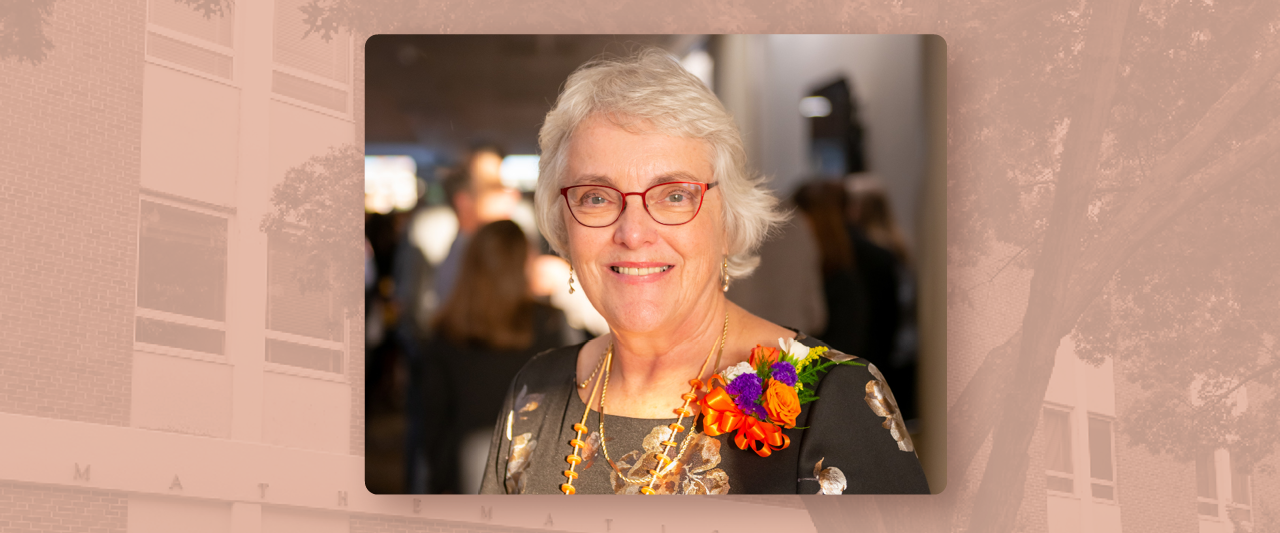Ardoth Hassler made contributions to information technology and higher education that have had far-reaching impacts, leading to her induction into the CAS Hall of Fame in September. She credits Oklahoma State University with providing her the tools to succeed.
“My OSU education fostered a 45-year career in IT and higher education,” said Hassler, a 1972 mathematics graduate. “The technical foundation that I had in mathematics and computer science at OSU launched me on that path.”
Her time at OSU not only gave her a foundation in the technical aspects of her major, but also provided a well-rounded education that allowed her to become a “boundary bridger.” That is someone who works across multiple disciplines to expand traditional thinking and connect new ideas together. For Hassler, this included working with faculty and students in classics, medicine, sciences and the arts.
Hassler was part of the initial group of students in the computer science program, established in 1969. Following her graduation at OSU, she earned a master’s in biostatistics from the University of Oklahoma Health Sciences Center. Due to her background, she was then able to become a scientific programmer and work within higher education. Hassler worked on a large number of projects including academic computing, information security and systems as well as heading institutional research at a number of universities.
According to Christopher Francisco, head of OSU’s Department of Mathematics, Hassler was a “pioneer in making support for research, part of the IT mission.”
Hassler broke into the computing field in a time of great change and was able to make a name for herself. Computing was a developing field and incredibly difficult to be successful in, due to the science behind computing constantly changing and evolving. Every few years, Hassler would need to retrain herself to be competitive and up to date on the latest methods and research. What could be seen as a time-consuming challenge was something that Hassler took in stride as part of her love of bridging knowledge. Hassler’s knowledge, training and education also gave her a competitive advantage in the male-dominated fields of computing and mathematics.
“The mathematics that I do would be really difficult to do without people like Ardoth having set up the infrastructure and communication between researchers and IT professionals,” Francisco said.
Some of the roles that Hassler has held throughout her career include head of computing at The Catholic University of America location in Washington, D.C., and the associate vice president for University Information Services at Georgetown University in Washington D.C., where she worked for 22 years.
She also was detailed to the National Science Foundation where she collaborated to establish cybersecurity best practices for large research facilities in the country. She worked on a wide range of projects including developing technology policies, assisting NSF in joining the InCommon Federation and also working on the NSF’s “Got Green” initiative, for which she was awarded the Director’s Award in 2009 and 2010.
“To be trained in the 1970s in a field that is constantly evolving and rapidly changing and some 40 years later being an expert called upon by the National Science Foundation is really impressive to me,” said Francisco.
In her career, Hassler has served on the boards of the InCommon Federation and Seminars in Academic Computing. She has also participated in committees for EDUCAUSE, Internet2, ACM Special Interest Groups and the National Science Foundation Annual Cybersecurity Summit. She has over 75 presentations and publications.
Now that she is retired, she focuses on volunteer work including making quilts and donating them to Quilts of Valor and Quilts for Kids. She also enjoys traveling, choral singing and hiking with her husband, James Short. She remembers her time at OSU with fond memories.
“I was most proud as an undergraduate to be selected for Mortar Board,” Hassler said. “The Mortar Board tenants of scholarship, leadership and service, I learned at OSU. I’ve tried to embody these concepts throughout my career and in my life.”

